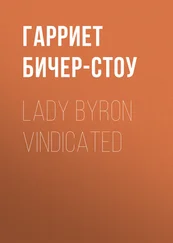Гарриет Бичер-Стоу - Sunny Memories of Foreign Lands, Volume 2
Здесь есть возможность читать онлайн «Гарриет Бичер-Стоу - Sunny Memories of Foreign Lands, Volume 2» — ознакомительный отрывок электронной книги совершенно бесплатно, а после прочтения отрывка купить полную версию. В некоторых случаях можно слушать аудио, скачать через торрент в формате fb2 и присутствует краткое содержание. Жанр: Путешествия и география, literature_19, foreign_antique, foreign_prose, foreign_children, на английском языке. Описание произведения, (предисловие) а так же отзывы посетителей доступны на портале библиотеки ЛибКат.
- Название:Sunny Memories of Foreign Lands, Volume 2
- Автор:
- Жанр:
- Год:неизвестен
- ISBN:нет данных
- Рейтинг книги:5 / 5. Голосов: 1
-
Избранное:Добавить в избранное
- Отзывы:
-
Ваша оценка:
- 100
- 1
- 2
- 3
- 4
- 5
Sunny Memories of Foreign Lands, Volume 2: краткое содержание, описание и аннотация
Предлагаем к чтению аннотацию, описание, краткое содержание или предисловие (зависит от того, что написал сам автор книги «Sunny Memories of Foreign Lands, Volume 2»). Если вы не нашли необходимую информацию о книге — напишите в комментариях, мы постараемся отыскать её.
Sunny Memories of Foreign Lands, Volume 2 — читать онлайн ознакомительный отрывок
Ниже представлен текст книги, разбитый по страницам. Система сохранения места последней прочитанной страницы, позволяет с удобством читать онлайн бесплатно книгу «Sunny Memories of Foreign Lands, Volume 2», без необходимости каждый раз заново искать на чём Вы остановились. Поставьте закладку, и сможете в любой момент перейти на страницу, на которой закончили чтение.
Интервал:
Закладка:
We were quite interested in a series of paintings which represented the various events of the present queen's history. There was the coronation in Westminster Abbey—that national romance which, for once in our prosaic world, nearly turned the heads of all the sensible people on earth. Think of vesting the sovereignty of so much of the world in a fair young girl of seventeen! The picture is a very pretty one, and is taken at the very moment she is kneeling at the feet of the Archbishop of Canterbury to receive her crown. She is represented as a fair-haired, interesting girl, the simplicity of her air contrasting strangely with the pomp and gorgeous display around. The painter has done justice to a train of charming young ladies who surround her; among the faces I recognized the blue eyes and noble forehead of the Duchess of Sutherland.
Then followed, in due order, the baptism of children, the reception of poor old Louis Philippe in his exile, and various other matters of the sort which go to make up royal pictures.
In the family breakfast room we saw some fine Gobelin tapestry, representing the classical story of Meleager. In one of the rooms, on a pedestal, stood a gigantic china vase, a present from the Emperor of Russia, and in the state rooms before we had seen a large malachite vase from the same donor. The toning of this room, with regard to color, was like that of the room I described in Stafford House—the carpet of green ground, with the same little leaf upon it, the walls, chairs, and sofas covered with green damask. Around the walls of the room, in some places, were arranged cases of books about three feet high. I liked this arrangement particularly, because it gives you the companionship of books in an apartment without occupying that space of the wall which is advantageous for pictures. Moreover, books placed high against the walls of a room give a gloomy appearance to the apartment.
The whole air of these rooms was very charming, suggestive of refined taste and domestic habits. The idea of home, which pervades every thing in England, from the cottage to the palace, was as much suggested here as in any apartments I have seen. The walls of the different rooms were decorated with portraits of the members of the royal family, and those of other European princes.
After this we went through the kitchen department—saw the silver and gold plate of the table; among the latter were some designs which I thought particularly graceful. To conclude all, we went through the stables. The man who showed them told us that several of the queen's favorite horses were taken to Osborne; but there were many beautiful creatures left, which I regarded with great complacency. The stables and stalls were perfectly clean, and neatly kept; and one, in short, derives from the whole view of the economics of Windsor that satisfaction which results from seeing a thing thoroughly done in the best conceivable manner.
The management of the estate of Windsor is, I am told, a model for all landholders in the kingdom. A society has been formed there, within a few years, under the patronage of the queen, Prince Albert, and the Duchess of Kent, in which the clergy and gentry of the principal parishes in this vicinity are interested, for improving the condition of the laboring classes in this region. The queen and Prince Albert have taken much interest in the planning and arranging of model houses for the laboring people, which combine cheapness, neatness, ventilation, and all the facilities for the formation of good personal habits. There is a school kept on the estate at Windsor, in which the queen takes a very practical interest, regulating the books and studies, and paying frequent visits to it during the time of her sojourn here. The young girls are instructed in fine needlework; but the queen discourages embroidery and ornamental work, meaning to make practical, efficient wives for laboring men. These particulars, with regard to this school, were related to me by a lady living in the vicinity of Windsor.
We went into St. George's Chapel, and there we were all exceedingly interested and enchained in view of the marble monument to the Princess Charlotte. It consists of two groups, and is designed to express, in one view, both the celestial and the terrestrial aspect of death—the visible and the invisible part of dying. For the visible part, you have the body of the princess in all the desolation and abandonment of death. The attitude of the figure is as if she had thrown herself over in a convulsion, and died. The body is lying listless, simply covered with a sheet, through every fold of which you can see the utter relaxation of that moment when vitality departs, but the limbs have not yet stiffened. Her hand and a part of the arm are hanging down, exposed to view beneath the sheet.
Four figures, with bowed heads, covered with drapery, are represented as sitting around in mute despair. The idea meant to be conveyed by the whole group is that of utter desolation and abandonment. All is over; there is not even heart enough left in the mourners to straighten the corpse for the burial. The mute marble says, as plainly as marble can speak, "Let all go; 'tis no matter now; there is no more use in living—nothing to be done, nothing to be hoped!"
Above this group rises the form of the princess, springing buoyant and elastic, on angel wings, a smile of triumph and aspiration lighting up her countenance. Her drapery floats behind her as she rises. Two angels, one carrying her infant child and the other with clasped hands of exultant joy, are rising with her, in serene and solemn triumph.
Now, I simply put it to you, or to any one who can judge of poetry, if this is not a poetical conception. I ask any one who has a heart, if there is not pathos in it. Is there not a high poetic merit in the mere conception of these two scenes, thus presented? And had we seen it rudely chipped and chiselled out by some artist of the middle ages, whose hand had not yet been practised to do justice to his conceptions, should we not have said this sculptor had a glorious thought within him? But the chiselling of this piece is not unworthy the conception. Nothing can be more exquisite than the turn of the head, neck, and shoulders; nothing more finely wrought than the triumphant smile of the angel princess; nothing could be more artistic than the representation of death in all its hopelessness, in the lower figure. The poor, dead hand, that shows itself beneath the sheet, has an unutterable pathos and beauty in it. As to the working of the drapery,—an inferior consideration, of course,—I see no reason why it should not compare advantageously with any in the British Museum.
Well, you will ask, why are you going on in this argumentative style? Who doubts you? Let me tell you, then, a little fragment of my experience. We saw this group of statuary the last thing before dinner, after a most fatiguing forenoon of sightseeing, when we were both tired and hungry,—a most unpropitious time, certainly,—and yet it enchanted our whole company; what is more, it made us all cry—a fact of which I am not ashamed, yet. But, only the next day, when I was expressing my admiration to an artist, who is one of the authorities, and knows all that is proper to be admired, I was met with,—
"O, you have seen that, have you? Shocking thing! Miserable taste—miserable!"
"Dear me," said I, with apprehension, "what is the matter with it?"
"0," said he, "melodramatic, melodramatic—terribly so!"
I was so appalled by this word, of whose meaning I had not a very clear idea, that I dropped the defence at once, and determined to reconsider my tears. To have been actually made to cry by a thing that was melodramatic, was a distressing consideration. Seriously, however, on reconsidering the objection, I see no sense in it. A thing may be melodramatic, or any other atic that a man pleases; so that it be strongly suggestive, poetic, pathetic, it has a right to its own peculiar place in the world of art. If artists had had their way in the creation of this world, there would have been only two or three kinds of things in it; the first three or four things that God created would have been enacted into fixed rules for making all the rest.
Читать дальшеИнтервал:
Закладка:
Похожие книги на «Sunny Memories of Foreign Lands, Volume 2»
Представляем Вашему вниманию похожие книги на «Sunny Memories of Foreign Lands, Volume 2» списком для выбора. Мы отобрали схожую по названию и смыслу литературу в надежде предоставить читателям больше вариантов отыскать новые, интересные, ещё непрочитанные произведения.
Обсуждение, отзывы о книге «Sunny Memories of Foreign Lands, Volume 2» и просто собственные мнения читателей. Оставьте ваши комментарии, напишите, что Вы думаете о произведении, его смысле или главных героях. Укажите что конкретно понравилось, а что нет, и почему Вы так считаете.












